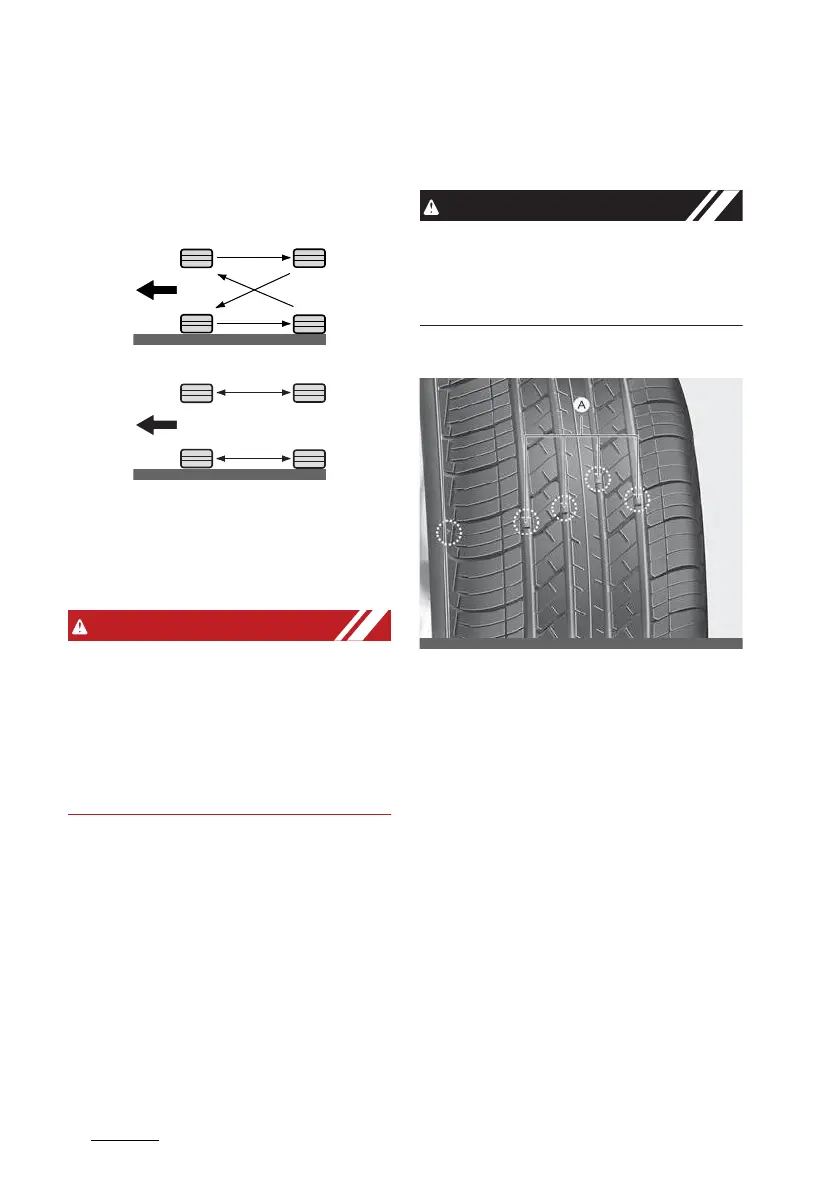Maintenance
327
Tires and wheels
sure to bring the front and rear tire pres
-
sures to specification and check lug nut
tightness.
Refer to "Tires and wheels" on page 8-4.
Without a spare tire
Directional tires (if equipped)
Disc brake pads should be inspected for
wear whenever tires are rotated.
Rotate radial tires that have an asym
-
metric tread pattern only from front to
rear and not from right to left.
Mixing tires
僅 Do not use the compact spare tire (if
equipped) for tire rotation.
僅 Do not mix bias ply and radial ply tires
under any circumstances. This may
cause unusual handling characteris
-
tics.
Wheel alignment and tire balance
The wheels on your vehicle were aligned
and balanced carefully at the factory to
give you the longest tire life and best
overall performance.
In most cases, you will not need to have
your wheels aligned again. However, if
you notice unusual tire wear or your
vehicle pulling one way or the other, the
alignment may need to be reset.
If you notice your vehicle vibrating when
driving on a smooth road, your wheels
may need to be rebalanced.
Wheel weight
Improper wheel weights can damage
your vehicle's aluminum wheels. Use
only approved wheel weights.
Tire replacement
If the tire is worn evenly, a tread wear
Indicator (A) will appear as a solid band
across the tread. This shows there is less
than 1/16 inch (1.6 mm) of tread left on
the tire. Replace the tire when this hap
-
pens.
Do not wait for the band to appear
across the entire tread before replacing
the tire.
The ABS works by comparing the speed
of the wheels. The tire size affects wheel
speed. When replacing tires, all 4 tires
must use the same size originally sup
-
plied with the vehicle. Using tires of a
different size can cause the ABS (Anti-
lock Brake System) and ESC (Electronic
Stability Control) to work irregularly.

